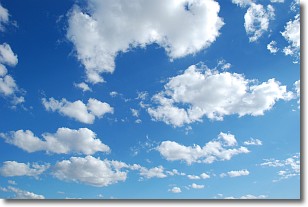Weather Alert in South Carolina
Tropical Cyclone Statement issued July 5 at 5:08PM EDT by NWS Charleston SC
AREAS AFFECTED: Hampton; Inland Colleton; Dorchester; Inland Berkeley; Inland Jasper; Beaufort; Coastal Colleton; Charleston; Coastal Jasper; Tidal Berkeley
DESCRIPTION: HLSCHS This product covers southeast South Carolina and southeast Georgia **CHANTAL MOVING CLOSER TO THE COAST OF SOUTH CAROLINA** NEW INFORMATION --------------- * CHANGES TO WATCHES AND WARNINGS: - None * CURRENT WATCHES AND WARNINGS: - A Tropical Storm Watch is in effect for Charleston * STORM INFORMATION: - About 90 miles southeast of Charleston SC or about 140 miles east of Savannah GA - 31.9N 78.7W - Storm Intensity 45 mph - Movement North or 360 degrees at 7 mph SITUATION OVERVIEW ------------------ Tropical Storm Chantal will meander closer to the Southeast U.S. coast this evening, making landfall along the middle and upper South Carolina coast overnight or early Sunday morning. As Chantal nears the coast, breezy northwest winds will occur as the system interacts with high pressure to the north. Wind gusts are forecast to remain the strongest along the South Carolina beaches, with gusts around 40 mph possible. In addition, wind gusts across the elevated bridges around the Charleston Metro area may exceed 45 mph at times today. Rain bands will continue to push onshore along the coast of the South Carolina Lowcountry into tonight. These bands may drift slowly inland as the system nears the coast bringing as much as 1 to 2 inches of rain. The rain may become locally heavy at times, resulting in flooding, mainly in low-lying and poor drainage areas. Widespread flash flooding is unlikely at this time. Nearing landfall, there is a chance of waterspouts forming within these rainbands over the nearshore Charleston waters and potentially moving onshore over extreme northern Charleston County through tonight into Sunday morning. Gusty winds and building waves will result in strong rip currents along the South Carolina and Georgia coast through this weekend. In addition, beach erosion and high surf with breakers of 4 to 6 feet could occur along the beaches of Charleston County. POTENTIAL IMPACTS ----------------- * WIND: Prepare for hazardous wind having possible limited impacts across Charleston County. Potential impacts in this area include: - Damage to porches, awnings, carports, sheds, and unanchored mobile homes. Unsecured lightweight objects blown about. - Large tree limbs broken off. A few trees snapped or uprooted, but with greater numbers in places where trees are shallow rooted. - Some roads impassable due to debris, particularly within urban or heavily wooded locations. Hazardous driving conditions on bridges and other elevated roadways, especially for high profile vehicles. - Isolated to scattered power and communications outages. Elsewhere across southeast South Carolina and southeast Georgia, little to no impact is anticipated. * FLOODING RAIN: Prepare for locally hazardous rainfall flooding having possible limited impacts across the South Carolina Lowcountry. Potential impacts include: - Localized rainfall flooding could prompt a few rescues. - Rivers and tributaries could quickly rise with swifter currents. Small streams, creeks, canals, and ditches could become swollen and overflow in spots. - Flood waters can enter a few structures, especially in normally vulnerable spots. Rapid ponding of water could occur at underpasses, low-lying spots, and poor drainage areas. Several storm drains and retention ponds become near-full and begin to overflow. Some brief road and bridge closures. Elsewhere across southeast South Carolina and southeast Georgia, little to no impact is anticipated. * OTHER COASTAL HAZARDS: Gusty winds and increasing wave activity will result in strong rip currents and high surf along the South Carolina and Georgia coasts through this weekend. * TORNADOES: Prepare for a tornado event having possible limited impacts across extreme northern Charleston County. Potential impacts include: - Isolated tornadoes can hinder the execution of emergency plans. - Isolated locations could experience tornado damage, along with power and communications disruptions. - In isolated locations, tornadoes could damage trees, vehicles, boats and buildings, especially mobile homes and other poorly constructed structures. Elsewhere across southeast South Carolina and southeast Georgia, little to no impact is anticipated. PRECAUTIONARY/PREPAREDNESS ACTIONS ---------------------------------- * EVACUATIONS: Follow the advice of local officials. * OTHER PREPAREDNESS INFORMATION: Always heed the advice of local officials and comply with orders that are issued. Do not needlessly jeopardize your life or the lives of others. Closely monitor weather.gov, NOAA Weather Radio and local news outlets for official storm information. Listen for possible changes to the forecast. * ADDITIONAL SOURCES OF INFORMATION: - For information on appropriate preparations see ready.gov - For information on creating an emergency plan see getagameplan.org - For additional disaster preparedness information see redcross.org NEXT UPDATE ----------- The next local statement will be issued by the National Weather Service in Charleston SC around 11 PM EDT, or sooner if conditions warrant.
INSTRUCTION: N/A
Want more detail? Get the Complete 7 Day and Night Detailed Forecast!
Current U.S. National Radar--Current
The Current National Weather Radar is shown below with a UTC Time (subtract 5 hours from UTC to get Eastern Time).

National Weather Forecast--Current
The Current National Weather Forecast and National Weather Map are shown below.

National Weather Forecast for Tomorrow
Tomorrow National Weather Forecast and Tomorrow National Weather Map are show below.

North America Water Vapor (Moisture)
This map shows recent moisture content over North America. Bright and colored areas show high moisture (ie, clouds); brown indicates very little moisture present; black indicates no moisture.

Weather Topic: What is Condensation?
Home - Education - Precipitation - Condensation
 Next Topic: Contrails
Next Topic: Contrails
Condensation is the process which creates clouds, and therefore
it is a crucial process in the water cycle.
Condensation is the change of matter from a state of gas into a state of liquid,
and it happens because water molecules release heat into the atmosphere and
become organized into a more closely packed structure, what we might see as
water droplets.
Water is always present in the air around us as a vapor, but it's too small for
us to see. When water undergoes the process of condensation it becomes organized
into visible water droplets. You've probably seen condensation happen before on the
surface of a cold drink!
Next Topic: Contrails
Weather Topic: What are Cumulonimbus Clouds?
Home - Education - Cloud Types - Cumulonimbus Clouds
 Next Topic: Cumulus Clouds
Next Topic: Cumulus Clouds
The final form taken by a growing cumulus cloud is the
cumulonimbus cloud, which is very tall and dense.
The tower of a cumulonimbus cloud can soar 23 km into the atmosphere, although
most commonly they stop growing at an altitude of 6 km.
Even small cumulonimbus clouds appear very large in comparison to other cloud types.
They can signal the approach of stormy weather, such as thunderstorms or blizzards.
Next Topic: Cumulus Clouds
Current conditions powered by WeatherAPI.com




